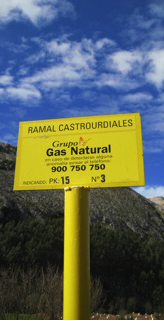The situation of the US market has changed in a short amount of time. The production of unconventional gas has changed the importation predictions. In this situation, and with the prices in the US being more than three times the price of gas in Asia, most import and regasification terminals (in operation and under construction) are developing options to convert them into liquefaction and exportation plants.
The agreement made between Sabine Pass Liquefaction and Gas Natural Aprovisionamientos was made public in December, by which the first of the two would deliver 3.5 million Mt of LNG per year to Gas Natural Fenosa. The contract is for 20 years, and can be extended for another ten. The deliveries would begin in 2016. Sabina Pass is constructing a liquefaction plant with the capacity for 9 million Mt/year at its first phase.
The open season that developed for analyzing the feasibility of the Alaska Gas pipeline was not successful.
In Canada, the Mackenzie Valley pipeline project was approved in the first few months of the year by the Natural Energy Board. It is 750 miles long. It goes through the valley it is named for, in the Northeast Territories. It could connect a dozen gas fields in this area and send gas to the North American markets. The pipeline could be operating in 2018.
The Kitimat liquefaction plant project is becoming a reality. Construction was started on the project in spring. Apache Corp. sources showed that it would begin exporting gas in 2015. It is located on the west coast.
South America is looking at small scale LNG projects in an effort to bring gas to remote areas of their countries, most over great distances. One example is the transportation of trucks by floats that would bring 1,000 m3 of gas from the Quintero plant every day, from close to Santiago de Chile to the city of Pemuco, 600 Km away.
In Chile, GasAtacama is planning to develop the third floating LNG regasification terminal in the country. The investment decision will be made in 2012. It is located two Km from the coast, in Mejillones Bay.
The first shipment of LNG got to the Mexican plant of Manzanillo at the end of 2011. It will be operating at full capacity mid-way through 2012. This plant will be supplied by resources from the Peruvian fields of Camisea, in Peru, where Repsol has an agreement to exploit 4.4 million Mt for 18 years.
Uruguay and Argentina have received initiatives to construct a floating LNG terminal. If it is put into effect, the emission capacity could be between 10 and 15 million m3/day. Uruguay is looking to reduce oil consumption and with this plant, could achieve a decline in dependency on crude oil of 63% in 2011 and 38% in 2015.
The Northeast Argentinian Pipeline (GNEA) is in the process of construction between Bolivia and Argentina. It will carry Bolivian gas to Argentina passing through 4,144 Km.
Mid-way through March, Enarsa announced that in June it would start receiving LNG in the new terminal (constructed together with YPF) located in Escobar, in Nothern Buenos Aires.
In Brazil, Petrobras announced in March 2011 that it would install a third offshore GNL terminal. It will bring 14 million m3/day to the state of Bahia, distributing gas to various areas of the city. The projects will begin in March 2012 and have a predicted end date of August 2013.

-
 Internacional Gas Union
Internacional Gas Union

